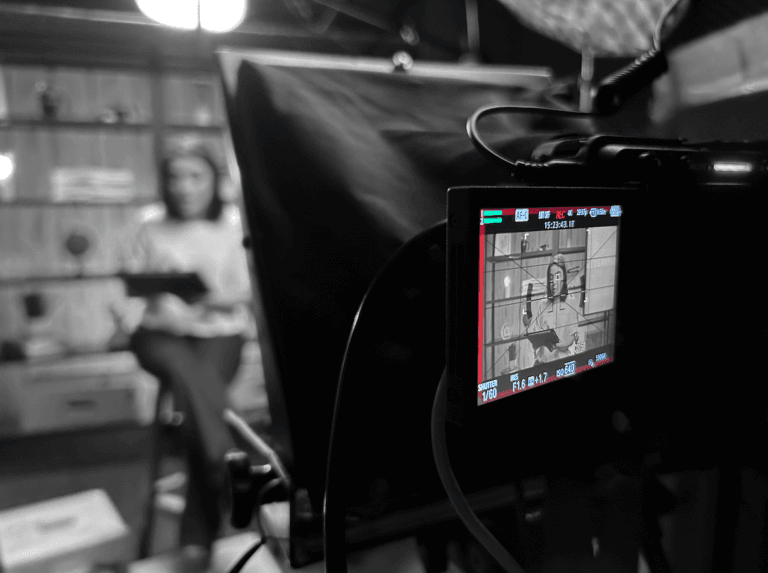Discover what happens in video pre-production! Planning, scripting, set design, equipment assembly and more to ensure the success of your project.

Producing a video involves much more than just turning on the camera and pressing the record button. Even before the “REC” button is pressed, there is an essential step that defines the success of the project: pre-production. This phase is responsible for aligning all the creative, technical and logistical elements to ensure that the final result lives up to expectations.
If you’re curious about what happens before the cameras start rolling, let’s dive into every detail of pre-production – from strategic planning to the final equipment adjustments.
Before taking any action, you need to understand the purpose of the video. This involves:
Identify your target audience: Who should watch the video?
Set the tone and purpose: Is the video informative, promotional, educational or institutional?
Define the expected result: Increase sales, engage on social media or promote a brand?
With this information in hand, it is possible to create a detailed briefing that will serve as a guide for the entire production.
Once the briefing has been defined, it is time to create the script. This step is crucial to align the narrative and convey the desired message in a clear and impactful way.
A good script includes:
Video structure: Introduction, development and conclusion.
Dialogues or voiceovers: What will be said in the video and at what moment.
Visual cues: Which scenes will be captured, camera angles and character actions.
Estimated time: Length of each scene or section of the video.
The script is the compass for the entire team, ensuring that everyone knows exactly what needs to be captured and how it should be done.
The space where the video will be recorded is essential to bring the project concept to life. The set design comes into play to create environments that reinforce the narrative and create the desired impact.
Here, some fundamental elements are defined:
Choosing the recording location: It can be in a studio, an external location or even in a corporate environment.
Decoration and scene objects: Everything that makes up the visual space of the video.
Base lighting: Ensure that the environment is well lit to highlight what will be filmed.
The scenography needs to be aligned with the brand's visual identity and the purpose of the video, creating an engaging and authentic setting.
Animated graphic elements, such as logos, transitions and visual effects, help to reinforce the visual identity of the video and make it more attractive.
In the pre-production process, it is common to develop a custom graphics package, which may include:
Introductory and closing vignettes.
Animated captions or subtitles.
Smooth transitions between scenes.
Icons or graphics to explain complex concepts.
This work is carried out by designers and animators, who create graphic elements integrated into the final editing of the video.
Technical configuration is one of the pillars to ensure visual and sound quality. At this stage, the production team organizes the equipment needed for the project.
Among the most common items are:
Professional cameras: Defining the model and lenses suitable for each scene.
Stabilizers or tripods: To capture stable images.
Lights: Softboxes, reflectors and other equipment for impeccable lighting.
Microphones and recorders: To ensure clean, noise-free audio.
This detailed preparation prevents unexpected issues during recording and ensures an efficient workflow.
Cinematography is responsible for transforming the visual aspect of the video into something that tells the story in an impactful and artistic way. This is the stage where the following is defined:
The lighting style: More dramatic, natural or technical.
Choosing angles and framing: Positioning the camera to enhance the narrative.
The color palette: Worked to harmonize the scenes and convey the desired tone.
Detailed planning so that every frame of the video is visually impressive.
Last but not least, there is the work with sound. Sound quality is as important as visual quality and cannot be neglected.
Before recording, the team makes sure that:
The microphones are properly positioned.
Ambient noises are minimized.
Audio tests are performed to adjust volumes and capture all dialogue or sounds clearly.
Additionally, soundtracks and sound effects can be defined in pre-production, helping to create an immersive experience.
Pre-production is the foundation of a successful video project. With proper planning, all aspects of filming and post-production become more fluid and efficient. It prevents delays, extra costs, and rework, and ensures that the final product aligns with the client’s creative vision and expectations.
If you want to produce professional and well-planned videos, get in touch and count on the expertise of Silvertake Video. Our team is ready to transform your idea into an audiovisual production suited to your needs.
Request a Quote